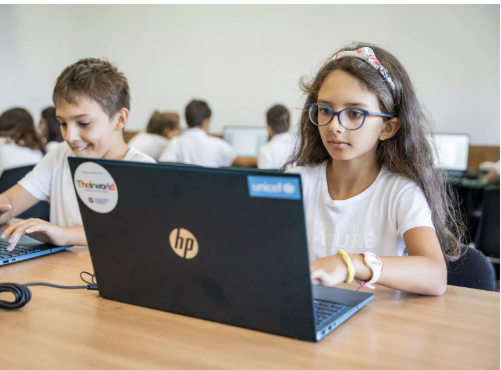Technology has become a transformative force in education, especially when it comes to empowering students. High schools that incorporate digital tools and online platforms into their programs give students more than just access to information—they offer new ways to learn, communicate, and lead. With thoughtful integration, technology helps students take control of their education, develop essential life skills, and prepare for a rapidly evolving world.
One of the most direct ways technology empowers students is by fostering independence in learning. Digital platforms provide students with access to personalized content, interactive lessons, and instant feedback. Whether through learning management systems, educational apps, or video tutorials, students can learn at their own pace and revisit materials as needed. This flexibility supports diverse learning styles and gives students a sense of ownership over their academic journey.
Technology also strengthens student voice and collaboration. Through discussion boards, group chats, and shared digital workspaces, students can share ideas, debate topics, and work together on projects regardless of physical location. These platforms promote active participation and ensure that every student has an opportunity to contribute, including those who may be less inclined to speak up in traditional classroom settings.
Digital tools help students build key 21st-century skills such as critical thinking, communication, creativity, and digital literacy. With access to multimedia creation tools, students can design presentations, edit videos, develop podcasts, or create infographics to demonstrate their understanding. These projects not only encourage creative expression but also teach students how to convey ideas in engaging, professional ways.
Technology also plays a vital role in preparing students for future careers. Exposure to platforms used in higher education and the workforce—such as spreadsheets, data analysis tools, coding software, and design applications—gives students a competitive edge. Career-focused programs may integrate digital simulations, virtual labs, and certification courses that offer real-world relevance and hands-on experience.
Furthermore, technology promotes inclusivity and access. Assistive tools such as text-to-speech, audio captioning, and digital translation support students with different learning needs or language backgrounds. Online resources also make learning possible for students in rural or underserved areas, removing barriers that once limited educational opportunities.
Educators are key to making this empowerment possible. Teachers who use technology effectively can create more engaging and inclusive lessons, track student progress more efficiently, and provide timely feedback. Professional development and support are essential to help teachers continually refine their use of technology and adapt to students’ evolving needs.
Empowering students through technology isn’t just about using devices—it’s about creating a culture of self-directed learning, innovation, and collaboration. When students are given the tools and confidence to take initiative, they become more motivated, responsible, and future-ready. Schools that embrace this mindset are helping shape a generation of learners who can think critically, adapt quickly, and make meaningful contributions in the digital age.














